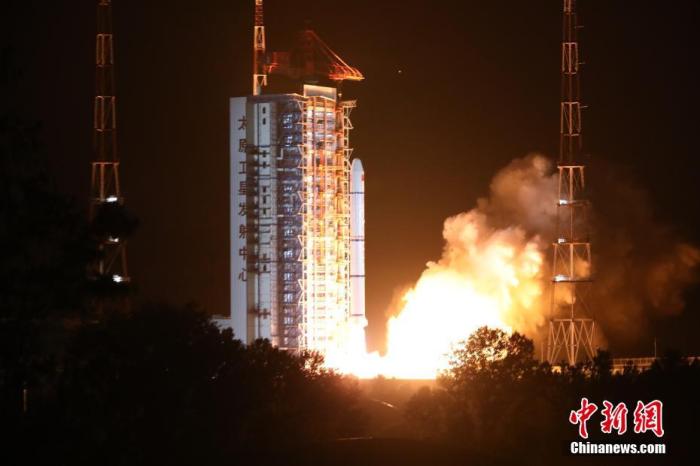China News Agency, Beijing, June 11 (Guo Chaokai, Chen Jie) At 2:31 on June 11, the Long March 2C rocket successfully put the Ocean One D star into a predetermined orbit. The reporter learned from the China Academy of Launch Vehicle Technology, a subsidiary of China Aerospace Science and Technology Corporation, that there will be two launch missions for the Long March 2C rocket in 2020.
At 2:31 on June 11, China successfully launched the Ocean One D star with the Long March 2C carrier rocket at the Taiyuan Satellite Launch Center. The star will form China’s first maritime civil service satellite constellation with Ocean One C star. Zheng Escape
The Long March 2C rocket that carried out this launch mission is China's first "Gold Medal Rocket" and also a "veteran" on the launch site. High reliability is its important label.
"This mission is mainly aimed at improving the problem of the large deformation of the rocket fairing during the fall." Gao Jiayi, the chief designer of the Long March 2C carrier rocket of the China Academy of Launch Vehicle Technology, told reporters that the fairing is a large diameter and internal The hollow, thin-walled structure is easily deformed during the fall, causing damage to the fairing.
To this end, in this task, the model team added an X-shaped beam and a beam to the internal structure of the fairing to improve the anti-deformation ability of the fairing, so that it will not be easily deformed and damaged during the fall. In addition, an optical fiber strain sensor was also installed on the fairing for the first time to measure the strain, stress and other parameters received during the fall of the fairing, which provided a reference for the analysis of the force of the fall of the fairing and the subsequent improvement measures.
Combined with the recent quality requirements, the model team continued to promote the refinement of the launch site process based on the preliminary work, and further promoted the digital and process operation quality control to ensure success. Researchers have also formed a job guidance document that integrates design and process; refine and analyze the four-hour process before launch, strengthen effective control of the pre-launch process, and improve the reliability of rocket launch.
This year, the Long March 2C rocket has two more launch missions, one of which will use a 4.2-meter fairing instead of the existing 3.35-meter fairing to provide greater envelope space for the satellite and once again improve the Long March 2C rocket. Task adaptability. This mission is the 334th launch of the Long March rocket series. (Finish)

